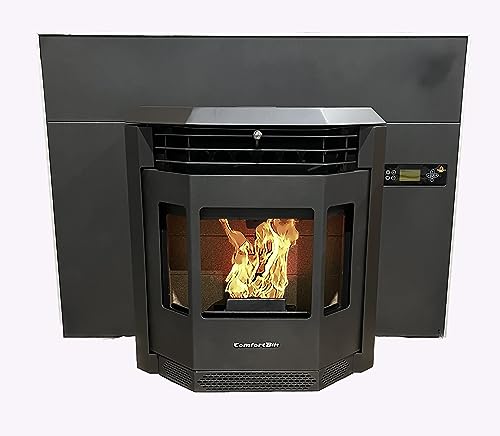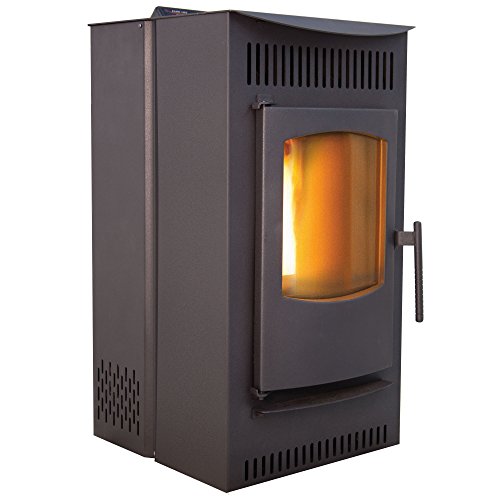Five Killer Quora Answers To Indoor Pellet Stove
페이지 정보

본문
 An Indoor Pellet Stove Requires Proper Installation and Maintenance
An Indoor Pellet Stove Requires Proper Installation and MaintenanceAn indoor pellet stove (your domain name) provides supplemental heating and can lower your energy bills. To be safe it needs regular maintenance and cleaning.
 Pellets are initially placed in the stove's hopper. The hopper holds the fuel until the auger pushes them into the combustion chamber. Hopper capacities vary between 40 and 120 pounds.
Pellets are initially placed in the stove's hopper. The hopper holds the fuel until the auger pushes them into the combustion chamber. Hopper capacities vary between 40 and 120 pounds.Energy efficiency
The type and quality pellets used pellet stoves for sale will determine the efficiency of energy used by the stove. Pellets are small cylinders made from compressed sawdust or other wood products. They are a renewable eco-friendly alternative to heating your home. Pellets with a high-quality, low-dust content generally burn hotter for longer than cheaper pellets, generating more heat while consuming less. Pellet stoves don't require a chimney and can be installed in homes that do not have a chimney, however they require a double-walled, certified venting system that meets local codes and regulations.
As with gas stoves, the pellet stoves also use blowers to help ignite the pellets. A combustion blower injects air into the burn pot to ensure that the flame is burning effectively and pushes exhaust gases to escape from the vent. Many manufacturers also offer air intake blowers to bring outside air to ignite which aids in maintaining an air quality that is healthy inside.
Like other types of fireplaces made from wood, pellet stoves require electricity to power their controls, fans and augers that transfer the pellets to the burner. This dependence on power could make them vulnerable to a power outage and requires a backup power source for safety.
Wood pellet stoves are capable of venting their flue gas through an outside wall or roof. The absence of a chimney permits you to install the stove in areas where gas stoves are limited because of the location of gas lines. For example in a basement that has been converted or garage.
The venting system used for pellet stoves small stoves is based on double-walled pipes that are certified typically three or four inches in diameter, to stop exhaust fumes from venting into the living space. Most manufacturers recommend a vertical rise of 3 to 5 feet (0.91 m to 1.52 m) but it is possible to use a horizontal pipe in certain cases.
It is essential to keep a stove clean in order to maintain its performance and safety. It is important to clean the ash pan, the combustion blower and ash tray in order to prevent flammable creosote buildup. An ash vacuum, which is similar to a shop vacuum but designed specifically for the removal of ash particles can help in this task.
Convenience
Pellet stoves are an easy method of heating your home with just the touch of an button. They release fewer harmful particles into the air and burn more cleanly than wood. They are also more compact than traditional wood-burning fireplaces, making them a good choice for homes that have limited outdoor storage space. These stoves work with thermostats, allowing homeowners the ability to control the heat level from any location using the smartphone or computer.
Like other appliances with combustion pellet stoves also require regular maintenance to ensure maximum efficiency. The stove's hopper and the ash pan must be cleaned regularly to prevent accumulation. The vent for the flue should also be cleaned each month to prevent the buildup of soot. Additionally, a backup power source is recommended to ensure uninterrupted operation in the event of a power failure.
Pellet stoves operate using an automated system, which only requires the pouring of fuel pellets that have been pre-packaged. The auger feeds the pellets to a combustion chamber which is then ignited by an electric ignition device. The resulting flames are used to heat the house, while fans circulate hot air throughout the space.
Some models come with an Energy Efficiency Rating that is EPA-certified as high, meaning they produce significantly more heat for each unit of fossil fuel used. Apart from increasing comfort in the home this efficiency can cut down on costs for energy and greenhouse gas emissions.
The cost of operating pellet stoves is dependent on a number of factors like the location of the stove, the availability of pellets and their prices, and also how often you use it. Pellet stoves can be cheaper than other types of heating and provide more comfort and ease of use.
While pellet stoves come with higher initial costs than other heating options, they can save homeowners money in the long run due to their low operating and maintenance costs. Additionally, they require less frequent chimney inspections than wood-burning stoves and provide an easier and consistent heating option.
In order to ensure optimal performance, pellet stoves should be used with a manufacturer-recommended brand of fuel. Incorrect fuels can harm the appliance, cause costly repairs and decrease the lifespan of the stove by affecting its overall operation. It is also crucial to clean the clinker that has accumulated on the bottom of the stove on a weekly or daily basis, and also cleaning the burn pot and the flue vent.
Maintenance
As with all major appliances in the home, pellet stoves require regular maintenance to ensure safe and proper operation. Regular maintenance helps avoid unforeseen problems and lets you enjoy comfortable, efficient heating throughout winter. By keeping up-to-date with specifics such as rust and creosote buildup to avoid costly repairs and extend the life of your pellet stove.
Cleaning the pellet stoves for sale stove requires few essential supplies and practices. Every week, you should empty the ashpan, scraping the burnpot and wiping the glass window. You might want to purchase an ash vacuum for more thorough cleaning.
The quality of the pellets used can have a significant impact on the performance of a stove. The best pellet stove pellets burn more consistently producing less ash and reducing the frequency of cleaning requirements. Avoid low-quality briquettes as they contain fillers which can cause inadequate combustion or excessive ash.
The heat exchanger is at the heart of the pellet stove. It converts the burning of wood pellets into clean hot air that can be distributed throughout your home. A dirty heat exchanger can decrease the efficiency of heating and create security issues. A professional technician can carry out an inspection and vacuuming of the heat exchanger.
It is essential to properly store wood pellets for the maintenance of pellet stoves. Keep them out of concrete floors since this could let moisture in. Instead, use pallets or an elevated platform to keep the pellets out from the ground. This preserves the integrity of the pellets and ensures they're dry when you're ready use them.
It is recommended to have your pellet stove professionally cleaned at the beginning and at the end of every heating season. The frequency of professional cleanings depends on how often you use your stove and the amount of creosote built up.
In addition to scheduled cleanings an experienced technician will examine the unit to spot potential problems and fix them quickly. For instance, if you observe a slow, flame that is sooty or orange it is a sign that the burn pot's air intakes are blocked. A professional will also inspect the vent system for proper installation and repair. Finally, they will lubricate and replace any parts that have corroded or worn.
Safety
Pellet stoves produce heat by burning small pellets made from compressed sawdust and wood waste. The pellets are then blown out of a venting system that exits outside the home. These stoves are energy efficient and can rapidly heat a space. Like any combustible appliance, they need to be installed and maintained properly to avoid risks of fire and other safety hazards.
These appliances also have limit switches like boilers and furnaces. These limits are designed to stop the pellet stove from operating outside its intended parameters if something goes wrong. If a problem occurs, the stove will shut down to prevent any harm or injury to pets or people within the home.
These devices along with limit switches, also come with exhaust fans to ensure proper burning and to stop the production of carbon monoxide. Carbon monoxide is a colorless, non-odorous gas that can be deadly if inhaled. Carbon monoxide detectors will alert you when the CO levels are too high in your house.
The first step to keep your pellet stove safe is to follow the manufacturer's recommendations when it comes to sizing and installing the venting system. A special vent pipe made of steel typically extends from the stove, through a hole that is pre-cut in the wall, and then out through a wall cap outside of the home. Another important safety measure is to keep this space free of obstructions, and keep flammable items out from the venting systems.
It is a good idea to inspect your pellet stove by a professional each year. The technician will then evaluate the condition of all the components including the hopper all the way up to the pressure switches. If the stove is showing signs of wear and tear or isn't performing efficiently the technician will suggest any necessary repairs or replacements.
Certain individuals are more susceptible to health risks associated with the use of pellet stoves. This includes those with respiratory conditions and children who are young. Regular health screenings are recommended for people who use pellet stoves to track their respiratory health.
- 이전글You'll Be Unable To Guess Sports Toto's Tricks 24.10.17
- 다음글The Most Underrated Companies To Keep An Eye On In The 1kg Coffee Beans Industry 24.10.17
댓글목록
등록된 댓글이 없습니다.